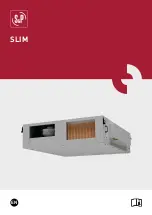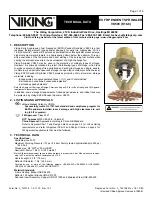
11-1
COMBI BOARD
TABLE OF CONTENTS
Brief Introduction ...................................................................... 11-1
Chip Layout - Main part (excluding Tuner portion) .................. 11-2
Component Layout - Main part (excluding Tuner portion) ....... 11-3
Power Supply Circuit ................................................................ 11-4
Source Selection Circuit ........................................................... 11-5
Pre- and Power Amplifier Circuit .............................................. 11-6
Circuit & Component diagrams - Trafo Pr. and Sec. parts ..... 11-7
Non-Cenelec Tuner Layouts & Adjustment Table .................... 11-8
Non-Cenelec Tuner Circuit ....................................................... 11-9
Cenelec Tuner Layouts & Adjustment Table .......................... 11-10
Cenelec Tuner Circuit ............................................................. 11-11
Electrical parts list .................................................................. 11-12
Brief introduction of the Combi Board
A. TRANSFORMER PRIMARY PART
Transformer Primary Circuit provide connection for AC mains supply and primary wires of transformer.
B. POWER SUPPLY PART
Power Supply Circuit consists of rectifiers, capacitive filters and voltage regulators. Regulated voltage i5V6, +LED, +12A, +12M,
-32V, PWDN. The +C supply to the power amplifier is not regulated. F1-F2 is the ac supply voltage to the FTD Display filament.
C. SOURCE SELECT & AMPLIFIER PART
a) SHIFT REGISTER (AF CONTROL)
This shift register deliver commands from the
µ
P to control the AF functions which include source selection (A0 & A1 control lines), DSC
modes , DBB, IS and CD_STBY. Other control lines such as MUTE, AMPON, STBY and PWM are coming directly from the
µ
P on the
Front board.
b) SOURCE SELECTION
One of the 4 sources, namely AUX, TAPE, TUNER, CD, can be selected via A0 & A1 lines which control the IC 7501 (HEF4052BT).
Karaoke mic. mixing is connected to th e selected source before the signal is amplified with a buffer amplifier (Tr 7503 & 7504). The
source signal is then split into recording path (for recording on tape) and main signal path (to the PWM volume control).
c) PWM VOLUME CONTROL
The discrete volume control makes use of 4 Transistors 7505, 7506, 7507 & 7508 (ON4986 or selected BC557B) and PWM control
signal from
µ
P. For good performance transistors for the left and right channels should be paired for gain characteristics.
d) SOUND FEATURES
Sound Features include the DBB, IS and 4 DSC modes. The sound features are realised with a hex-inverter IC 7530 (HEF4069UBT)
as analog buffer/amplifier and transistors as electronic switches controlled by the shift registers (AF control).
e) POWER AMPLIFIER
IC 7391 (AN7125) is used as power amplifier.
f)
CD_STBY CONTROL
This Transistor 7401 (BC337-25) switches on the CD supply (derived from +12A) to CD servo control, HF circuit and the laser
light pen on the CD Module during the CD mode only.
g) MATRIX SURROUND OUTPUT
The matrix surround feature is provided on board. This feature is only optional on certain type version.
D. KARAOKE PART
This simple Karaoke consists of a 1-mic. mono amplifier using discrete components. It has a level control using a rotary potmeter. This
feature is available for some version only.
E. HEADPHONE PART
The headphone output is derived from the power amplifier output after the attenuation resistors which are tailored to deliver 18mW output
power into a 32 ohm headphone.
F. CDC KEY PART
The CDC key buttons and LEDs are provided on this board.
11-1
















































